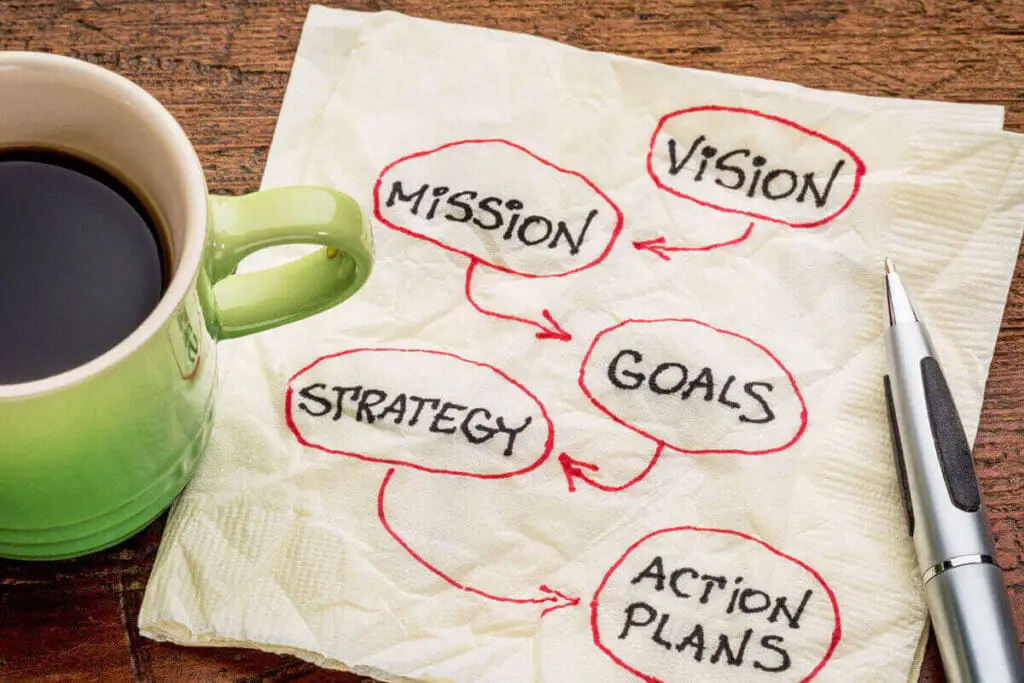Many businesses look at their business strategies but do not give their supply chains the same care; they do not see the supply chain as an essential part of their business.
The Supply chain and the business strategies are some of the most important strategies a business can have. A business should look to align both its supply chain and business strategy. To do, there are several steps that they can take to ensure this happens. Read on as we explore the steps a company can take to align its supply chain and business strategies.
Table of Contents
- Harmonizing Supply Chain Strategy With Business Strategy: A Roadmap To Operational Success
- 1. Define And Communicate A Clear Business Strategy
- 2. Identify The Areas Of The Business Strategy Enabled By The Supply Chain
- 3. Align Supply Chain Performance Metrics With The Business Strategy
- 4. Structure The Supply Chain To Optimize The Strategic Goals
- 5. Align Incentives End To End In Supply Chain
- 6. Keep Refreshing The Strategy And Alignment Process
- The Symbiotic Relationship Of Supply Chain Strategy And Business Strategy
- Frequently Asked Questions
- Related Content
Harmonizing Supply Chain Strategy With Business Strategy: A Roadmap To Operational Success
A clearly defined business strategy is a common attribute among successful organizations. However, an often-overlooked yet vital component in the competitive business landscape is the Supply Chain Strategy (SCS).
Developing a coherent Supply Chain Strategy is paramount to operationalizing and supporting the Business Strategy (BS). The challenge lies in aligning these strategies to achieve operational excellence and business goals.
Read on as we delve into the importance of integrating your Supply Chain Strategy with your Business Strategy and offer a roadmap featuring six robust strategies for achieving this alignment.
1. Define And Communicate A Clear Business Strategy
The foundation of aligning your Supply Chain Strategy (SCS) with your Business Strategy (BS) lies in defining and articulating a clear business strategy. A comprehensive business strategy should identify your company’s mission, vision, and objectives while outlining the steps needed to attain these goals.

Once a clear strategy is established, it’s vital to communicate it effectively across all levels of the organization. This communication ensures that every employee understands the company’s strategic objectives and their role in achieving them, fostering unity of purpose and effort.
2. Identify The Areas Of The Business Strategy Enabled By The Supply Chain
The next step is determining how the supply chain can enable your business strategy. This requires a deep understanding of the Business Strategy (BS) and the Supply Chain Strategy (SCS) and their interplay.

Evaluate each element of your business strategy and identify where and how the supply chain can contribute. For instance, if one strategic objective is to enter new markets, the supply chain can enable this by establishing efficient logistics and distribution networks.
Similarly, if your strategy prioritizes sustainability, the supply chain can contribute by sourcing eco-friendly materials and adopting green practices.
3. Align Supply Chain Performance Metrics With The Business Strategy
What gets measured gets managed. The importance of this business adage is amplified when it comes to aligning strategies. Setting performance metrics that reflect this alignment is crucial once you’ve identified how your supply chain can enable your business strategy.

If your Business Strategy (BS) emphasizes cost reduction, your supply chain metrics might include reducing warehousing or transportation costs. If speed is a priority, lead and delivery times might be your key metrics.
Ensure these metrics are regularly monitored and feedback is used to optimize the supply chain’s performance.
4. Structure The Supply Chain To Optimize The Strategic Goals
A well-structured supply chain is essential to drive strategic goals. This involves designing and configuring your supply chain to support your business strategy best.

If your Business Strategy (BS) demands a fast response to market changes, you might structure your supply chain to be agile, with flexible production capabilities and a responsive logistics network.
If your strategy centers on cost leadership, you might structure your supply chain for efficiency, focusings on economies of scale and process optimization.
5. Align Incentives End To End In Supply Chain
Alignment doesn’t stop at structuring your supply chain. It’s equally critical to align incentives across the supply chain to ensure everyone’s efforts contribute to your strategic goals.

This involves setting up incentive schemes that promote behaviors and outcomes aligned with your Business Strategies (BS).
For instance, if your strategy requires high service levels, you might incentivize suppliers who consistently meet their delivery schedules. These aligned incentives help foster a culture of strategic alignment and collaboration across the supply chain.
6. Keep Refreshing The Strategy And Alignment Process
Finally, remember that strategic alignment isn’t a one-time task but an ongoing process. The business environment is dynamic, and your strategies must be too.

Regularly review and refresh your business and supply chain strategies, ensuring they align with your changing objectives, market conditions, and customer expectations.
This involves maintaining open lines of communication, continually monitoring performance metrics, and fostering an agile culture that embraces change and continuous improvement. It also involves learning from past experiences and leveraging new technologies and practices to enhance your strategic alignment process.
The Symbiotic Relationship Of Supply Chain Strategy And Business Strategy
In the final analysis, a well-defined and well-executed Supply Chain Strategy is crucial in actualizing a Business Strategy. Understanding that these two entities are not isolated but somewhat symbiotic allows for a comprehensive approach to operational and business success.
Strategically aligning the Supply Chain Strategy with the Business Strategy is more than a mere operational necessity. It’s a competitive differentiator that can set your business apart in the modern marketplace.
The six strategies outlined above are stepping stones to achieving this alignment. However, the road to alignment is unique to each business and requires a thoughtful, strategic approach that considers the particularities of your organization, industry, and market.
The key takeaway is that your Supply Chain is not just a functional aspect of your business but a strategic asset. It’s not just about delivering products but delivering on your strategic promises. When you align your Supply Chain Strategy with your Business Strategy, you unlock a powerful synergy that drives performance, value, and growth.
In a world where change is the only constant, the organizations that can harmonize their strategic objectives with their operational capabilities – those that can marry their Supply Chain Strategy with their Business Strategy – are the ones that will stand the test of time and thrive in the face of adversity.
Frequently Asked Questions
What is a supply chain, and why is it important?
A supply chain is a network of organizations, resources, and activities involved in producing and delivering goods and services to consumers. It’s crucial because it ensures products reach consumers efficiently and cost-effectively.
How does a robust supply chain benefit businesses?
A strong supply chain improves efficiency, reduces costs, enhances customer satisfaction, and allows businesses to respond quickly to market changes and disruptions.
How does the global economy rely on supply chains?
In a globalized world, supply chains enable the movement of goods and materials across borders. They facilitate international trade, stimulate economic growth, and create job opportunities.
How does supply chain visibility benefit businesses and consumers?
Visibility allows businesses to track the movement of goods in real-time, improving inventory management, reducing waste, and ensuring on-time deliveries, which ultimately benefits consumers.
How does e-commerce rely on supply chains?
E-commerce heavily relies on efficient supply chains to fulfill online orders. Fast shipping, accurate deliveries, and a seamless customer experience are essential for e-commerce success.
If you are interested in seeing how Mondoro can help you with your supply chain – we would love to talk to you about how we can help you and be part of your global supply chain.
Find out more about how Mondoro can help you create, develop, and manufacture excellent home decor and home furniture products – don’t hesitate to contact me, Anita. Check out my email by clicking here or become a part of our community and join our newsletter by clicking here.
Mondoro gives out a FREE Lookbook to anyone interested. You can receive a copy of our latest Lookbook by clicking here.
Listen to our Podcast called Global Trade Gal. You can find it on all major podcast platforms. Try out to listen to one of our podcasts by clicking here.
Subscribe to our Mondoro Company Limited YouTube Channel with great videos and information by clicking here.
Related Content
How Do You Load A Dry Shipping Container?
A dry shipping container is a container that is used for 90% of all shipments worldwide. The dry shipping containers’ standard sizes are 20’, 40’, and 40’ HC container sizes. Each size has different payload weights and loading size limits, so when you prepare to load your container, what container size you choose will make a huge difference in the actual container loading.
To learn more about loading a dry shipping container, read our blog on 10 Tips On Loading A Dry Shipping Container, What You Need To Know by clicking here.
What Is The DUPRO or During Production Inspection?
The DUPRO Inspection is a product inspection conducted during the manufacturing phase of production. The DUPRO is also known as during the production inspection, as its main purpose is to find any errors during the product’s manufacturing phase. Most manufacturing errors are easier to fix during production than when the goods are completed.
You can learn more about DUPRO by reading our blog DUPRO, During the Production Product Inspection Guide by clicking here.
What Is The Difference Between Supply Chain Management and Logistics?
Supply chain management is about the collaboration and partnerships to get the goods from raw materials to the end consumer; it is about the partnerships and alliances within this process. Logistics is one part of supply chain management; logistics involves moving goods from one place to another.
To learn more about loading a dry shipping container, read our blog on What Is The Difference Between Supply Chain Management and Logistics? by clicking here.


